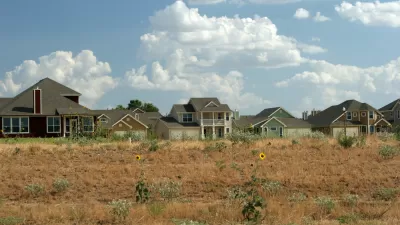A recent series of data on the growth of households in the United States reveals the unprecedented scale of housing demand in recent years.

New household creation data is providing new perspective on the unprecedented housing market demand of the period between 2019 and 2021.
Daniel McCue provides analysis of household growth in the United States in a post for the Joint Center for Housing Studies of Harvard University.
McCue writes:
Three household surveys released over the past few months by the Census Bureau all show nearly unprecedented levels of household growth from 2019 through 2021. The American Community Survey (ACS), Housing Vacancy Survey (CPS/HVS), and American Housing Survey (AHS) each report that annual household growth between 2019 and 2021 averaged between 2.0 million and 2.4 million per year (Figure 1). This level of household growth is well above the 1.4-1.5 million per year pace averaged in 2017-2019, prior to the pandemic, which itself was already higher than previous levels or the 1.2 million households per year average baseline growth rate for 2018-2028 that we projected in 2018.
Some of that household growth was accomplished by the largest generation in the nation’s history (i.e., Millennials) coming of age, according to McCue, peaking a trend that had been building since 2016. But economic factors also contributed, including increased wages and decreased unemployment. “Three rounds of stimulus payments helped adults grow savings for deposits or downpayments, and the pause in student loan payments left borrowers an average of $200 per month to spend on other items,” adds McCue.
A final factor, a sharp growth in the share of the population heading their own household, also contributed to household growth, according to McCue, but also indicates that the trend will be temporary: “Headship rates for most age groups have recovered to rates from a decade ago, and with deteriorating affordability for both renters and homeowners over the past year, further gains in household formation may be limited.” With population growth returning to its previous role as the primary driver of household growth as a result, the smaller generations following the Millennials will place less pressure on the housing market.
A lot more detail on these themes, including useful infographics, are included in the source article below.
FULL STORY: THE SURGE IN HOUSEHOLD GROWTH AND WHAT IT SUGGESTS ABOUT THE FUTURE OF HOUSING DEMAND

Alabama: Trump Terminates Settlements for Black Communities Harmed By Raw Sewage
Trump deemed the landmark civil rights agreement “illegal DEI and environmental justice policy.”

Planetizen Federal Action Tracker
A weekly monitor of how Trump’s orders and actions are impacting planners and planning in America.

The 120 Year Old Tiny Home Villages That Sheltered San Francisco’s Earthquake Refugees
More than a century ago, San Francisco mobilized to house thousands of residents displaced by the 1906 earthquake. Could their strategy offer a model for the present?

In Both Crashes and Crime, Public Transportation is Far Safer than Driving
Contrary to popular assumptions, public transportation has far lower crash and crime rates than automobile travel. For safer communities, improve and encourage transit travel.

Report: Zoning Reforms Should Complement Nashville’s Ambitious Transit Plan
Without reform, restrictive zoning codes will limit the impact of the city’s planned transit expansion and could exclude some of the residents who depend on transit the most.

Judge Orders Release of Frozen IRA, IIJA Funding
The decision is a victory for environmental groups who charged that freezing funds for critical infrastructure and disaster response programs caused “real and irreparable harm” to communities.
Urban Design for Planners 1: Software Tools
This six-course series explores essential urban design concepts using open source software and equips planners with the tools they need to participate fully in the urban design process.
Planning for Universal Design
Learn the tools for implementing Universal Design in planning regulations.
Clanton & Associates, Inc.
Jessamine County Fiscal Court
Institute for Housing and Urban Development Studies (IHS)
City of Grandview
Harvard GSD Executive Education
Toledo-Lucas County Plan Commissions
Salt Lake City
NYU Wagner Graduate School of Public Service




























